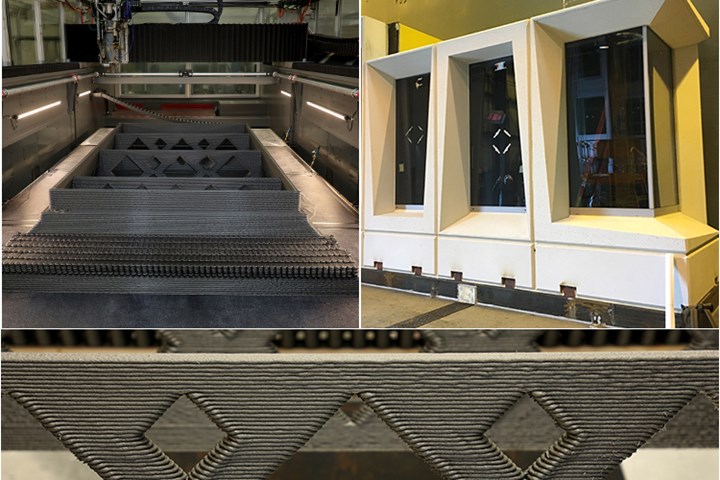ORNL conducts sustainability analysis of 3D-printed composite molds
A comprehensive lifecycle, cost and carbon emissions study on carbon fiber molds, produced for New York’s concrete Domino building, cites economic benefits over wood alternatives.

ORNL’s 3D-printed polymer composite mold used to produce precast concrete parts. Photo Credit: ORNL, U.S. Dept. of Energy and Gate Precast
In 2017, building technologies and manufacturing researchers at Oak Ridge National Laboratory (ORNL, Oak Ridge, Tenn., U.S.) collaborated with Gate Precast, a member of Precast/Prestressed Concrete Institute (PCI, Chicago, Ill., U.S.) to design and produce carbon fiber-reinforced acrylonitrile butadiene styrene (ABS) molds to renovate the concrete facade of the One South First building in Domino Park in New York. CW reported about these mold developments in depth in May 2020 (read the article here).
Recently, ORNL researchers have conducted a comprehensive lifecycle, cost and carbon emissions analysis on these 3D-printed molds for precast concrete and determined the method is economically beneficial compared to conventional wood molds. Results are discussed in their latest published article.
Precast concrete is used in building construction and produced by pouring the material into a reusable mold. For decades, these molds have been made from wood — a technique that requires a highly specialized skillset. As an alternative, molds made from fiber-reinforced composites can be 3D printed.
“We developed a techno-economic model that compared costs associated with each method, evaluating materials, equipment, energy and labor,” ORNL’s Kristina Armstrong says. “3D printing can make complex molds faster, and the composites can be recycled, leading to more economical molds when used many times for precast concrete parts.”
According to the study, not only did it take less time to manufacture the 3D-printed carbon fiber-reinforced ABS molds, but they were shown to not need substantial repairs compared to wooden alternatives. Optimizing mold designs reduces energy demand and carbon emissions.
Future studies will further evaluate the recycling impact.
For related information, read about these 3D-printed CFRP tools used for aerospace landing flaps, or 3D printing’s ability to produce autonomous waer vehicles (AUVs) without the need for molds.
Related Content
-
Composites enable epic interior for Museum of the Future
For this one-of-a-kind lobby, AFI pioneered digital, reconfigurable molds to achieve organic-shaped, multifunctional panels and stairwell cladding.
-
Plant tour: Airtech International, Springfield, Tenn., U.S.
Fifty years of supplying materials for composites manufacturing includes custom fabrication and now aims to advance 3D-printed tooling, parts and new resins.
-
Digitizing tools for composites production
Alpex Technologies focuses on industrialization, process and part intelligence and biocomposites in its next generation of tooling systems.
















